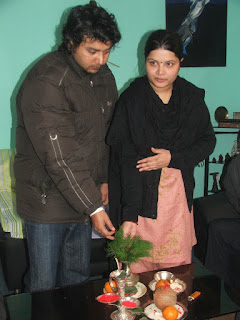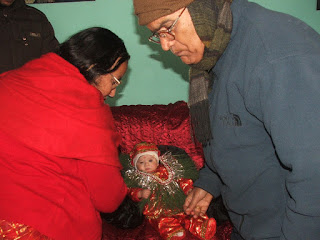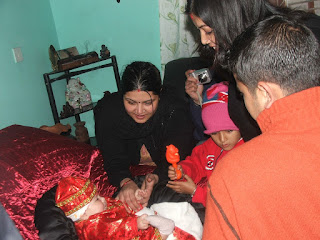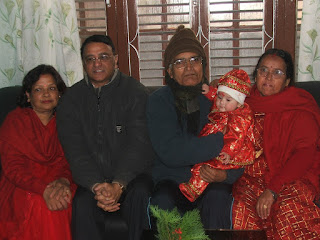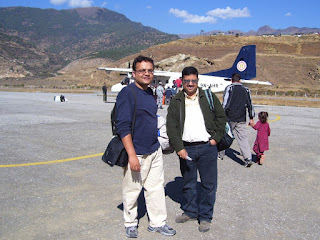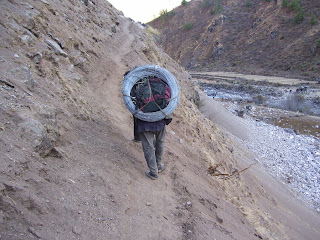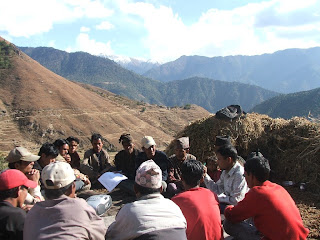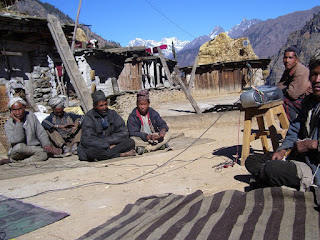Kathmandu, the capital city of Nepal seems very much busier than before because most of the Maoist leaders these days in capital as well as civil society has engaged in the series of discussions on what Constituent Assembly is and how its process because by the end of July the CA for New Nepal will be held. Social healing is challenging rather than having critical CA election. So, from January 20 until 23, Institute for Conflict Management Peace and Development (ICPD), INSEC and Karuna Center for Peace building (KCP) USA have organized four days training cum workshop " Leadership in Social Healing: Conflict Transformation and Peace-Building" in Kathmandu. Around 2 dozens member of Civil Society have taken part in the program. That was the beginning of this kind of because other three training are in line during 2007. At the end of the last training that may be in October participants of first training would be able to covert themselves into as the Trainer of Peace-Building. Here are some photographs of training. Photos are taken by Francis and Binaya. 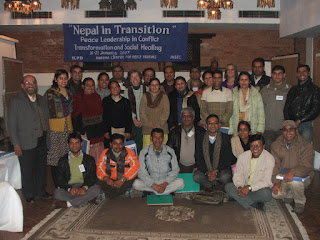 We are happy since peace accord have been signed and interim parliament has been established. NO matter we are happy whether we should not be able to seek the way of happiness in everybody face. So social healing is necessary. Come together and work together. because this is the beginning of establishment of peace in the society.
We are happy since peace accord have been signed and interim parliament has been established. NO matter we are happy whether we should not be able to seek the way of happiness in everybody face. So social healing is necessary. Come together and work together. because this is the beginning of establishment of peace in the society.

 We are happy since peace accord have been signed and interim parliament has been established. NO matter we are happy whether we should not be able to seek the way of happiness in everybody face. So social healing is necessary. Come together and work together. because this is the beginning of establishment of peace in the society.
We are happy since peace accord have been signed and interim parliament has been established. NO matter we are happy whether we should not be able to seek the way of happiness in everybody face. So social healing is necessary. Come together and work together. because this is the beginning of establishment of peace in the society.
Politics is everywhere. So politician has to be changed at first for the making of New Nepal. Jayanti Rai, recently nominated member of parliament taking the training of conflict transformation and social healing with members of civil society.
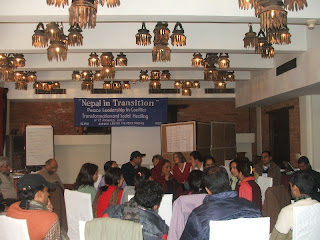 Conflict transformation and social healing are challenging job, however, if we try collectively we would able to establish the lasting peace in the society. so we are together. Let's try.......
Conflict transformation and social healing are challenging job, however, if we try collectively we would able to establish the lasting peace in the society. so we are together. Let's try.......
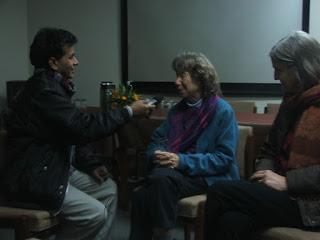 We (me Dr. Paula along with Olivia), therefore, through your radio program would like to give message to Nepali people that you were made the remarkable history for the peace building. Keep it up. Social healing is the more challenging than having the peace. We are all doing for Nepali people.
We (me Dr. Paula along with Olivia), therefore, through your radio program would like to give message to Nepali people that you were made the remarkable history for the peace building. Keep it up. Social healing is the more challenging than having the peace. We are all doing for Nepali people.
 Conflict transformation and social healing are challenging job, however, if we try collectively we would able to establish the lasting peace in the society. so we are together. Let's try.......
Conflict transformation and social healing are challenging job, however, if we try collectively we would able to establish the lasting peace in the society. so we are together. Let's try....... We (me Dr. Paula along with Olivia), therefore, through your radio program would like to give message to Nepali people that you were made the remarkable history for the peace building. Keep it up. Social healing is the more challenging than having the peace. We are all doing for Nepali people.
We (me Dr. Paula along with Olivia), therefore, through your radio program would like to give message to Nepali people that you were made the remarkable history for the peace building. Keep it up. Social healing is the more challenging than having the peace. We are all doing for Nepali people.

